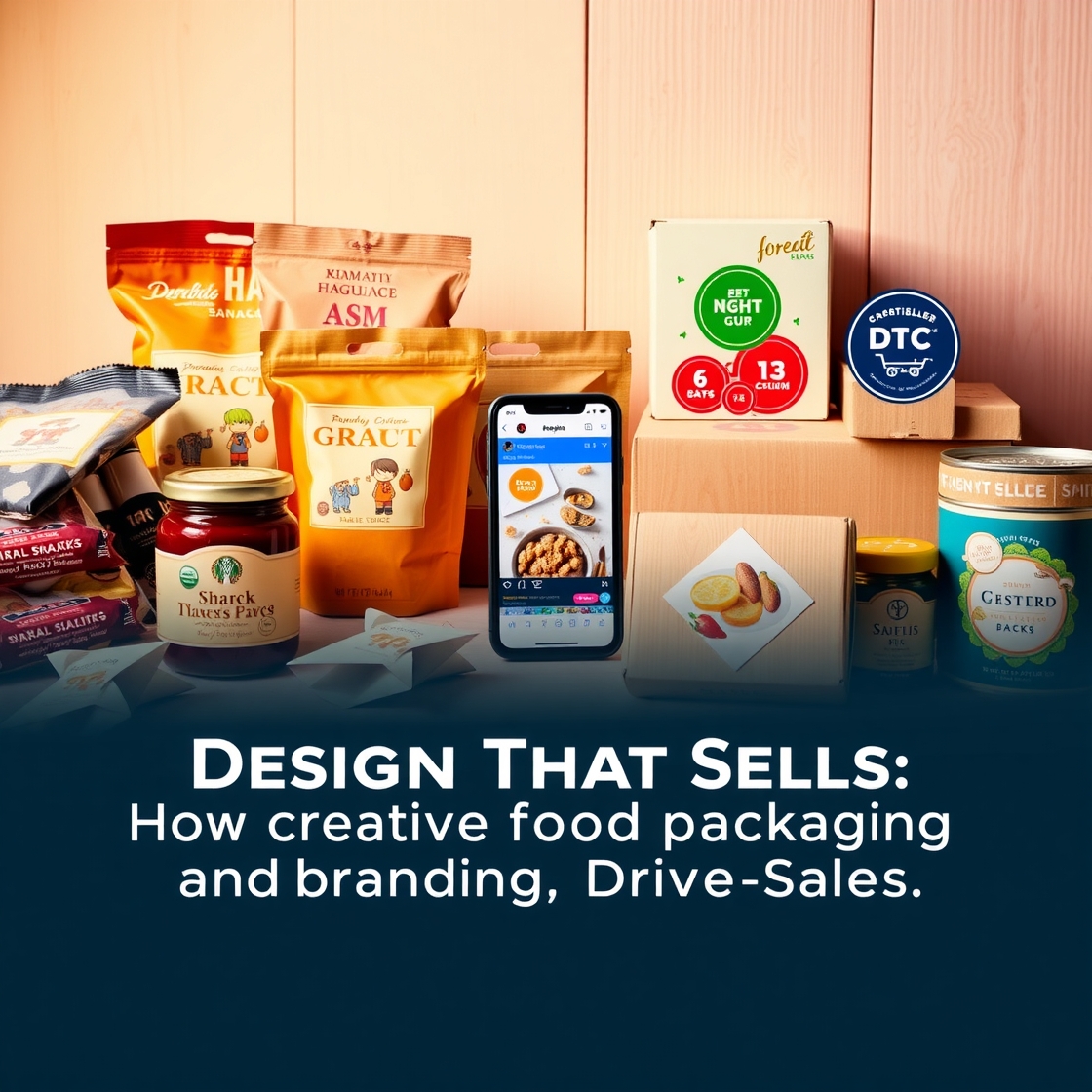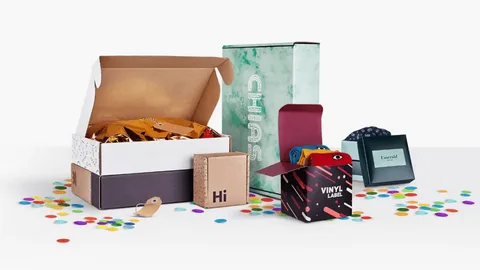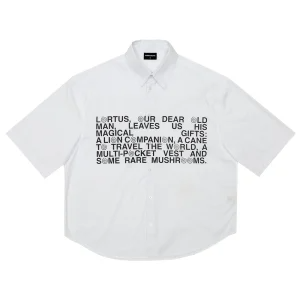
The present-day aggressive food market demands more than tasty products alone for brands to achieve success. The packaging of a new food product drives 70 percent of consumers to purchase it. Research shows that 70% of consumers choose new food products based on their packaging enabling creative design for both food packages and restaurants together with strategic marketing approaches to drive sales behavior along with market success. This article delves into the psychology behind food design, packaging’s role in sales, the art of menu design, social media’s influence, and the power of consistent branding. The article explores both ethical design patterns and retail atmosphere together with practical recommendations for food industry entrepreneurs as well as restaurant managers and operators of small food businesses.
The Psychology of Food Design
The process of design functions beyond visible appearance since it connects to fundamental human subconscious reactions. Food packages and restaurant branding utilizes colors together with fonts alongside shapes to create psychological responses in consumers.
How Colors Influence Appetite?
Various colors produce different psychological reactions within human beings. Red and Yellow serve as colors that activate hunger and urgent feelings also generate excitement. The color combination of red and yellow at McDonald’s exists to boost appetite alongside driving consumers toward immediate choices. The colors green and brown communicate the sense of freshness and health as well as natural elements and find their application in brands focused on organic and environmentally friendly practices. Black and Gold: Represent luxury and exclusivity, ideal for gourmet or premium food products. The use of blue in food packaging is limited since the color minimizes food cravings but it can establish trust if applied correctly.
Fonts and Shapes in Food Packaging
The selected font in packaging communicates brand characteristic through its boldness which indicates authority or the handwritten font which transfers craftsmanship and safety feel. Moreover the shapes of packaging matter because smooth rounded edges create comforting feelings while pointed edges communicate that luxury and sophistication are present.
Well-designed Package
A well-designed package functions as an invisible marketer which combines functional and emotional selling qualities. The packaging material both guards products from harm while sending brand-related messages to consumers who use these messages to decide their purchasing choices. A properly designed package for food products functions like an invisible salesperson which communicates product excellence together with brand principles and character attributes.
Functional Packaging for Convenience
The modern consumer bases their choices on products that both work well and offer simple operation. The user experience benefits from packaging elements that include:
- The use of resealable bags provides food protection while making consumption easy during mobile eating.
- See-through packaging elements enable customers to view inside contents thus creating a trusting environment.
- The packaging of portion control packs addresses the needs of consumers who focus on their health.
- Customers benefit from custom printed food bags since they provide branding opportunities combined with practical usage features.
Emotional Appeal: Packaging That Connects
The packaging must stimulate emotions which build memorable moments for consumers. Emotional design elements include:
- British customers connect more deeply with brands through labels that present their stories of origin or mnemonic histories which elicit trust memories.
- Companies should include sustainability statements in their packaging since they attract customers who care about the environment.
- The package contains interactive elements such as Quick Response codes which direct users to view recipes or brand narratives.
Menu Design: The Art of Upselling
Restaurant branding design finds its most effective tool through menu psychology which is also known as menu engineering. A quality menu design guides consumers toward selecting premium offerings which lead to better profit margins for the establishment.
The Science of Menu Psychology
Food service establishments use menus to generate sales instead of presenting food choices to customers. Research about food descriptions reveals these items produce a 27% boost in food sales. Here’s how:
- The first point of attention for diners is the upper right section of the menu therefore place high-margin items in this area.
- Borders together with boxes and shading help to direct attention towards specific menu items.
- The menu item “Juicy Grilled Chicken with Herb-Infused Aioli” presents a more appealing description compared to “grilled chicken sandwich.”
- The use of currency symbols ($12) in price formats should be avoided to reduce customer sensitivity towards prices.
Strategic Use of Whitespace
A cluttered menu overwhelms diners. Whitespace management throughout the menu enables customers to move through the selection while identifying specific menu highlights.
Social Media
It creates a visual competition through aesthetics that drives customer sales. Visual attractiveness has become an absolute requirement in the Instagram era for food presentation because people demand it. A business must use photogenic food displays together with inventive advertisements because these elements build essential online publicity.
Instagrammable Food Trends
Neon dessert creations as well as perplexing over-the-top food presentations grab customer attention. Audiences find joy in minimalist food plating styles and can see the skill and high quality of the dishes. Urgent feelings that arise from limited-time releases drive customers to make quick buying decisions. The Viral Effect occurs because design techniques drive social sharing behavior. Visual marketing success depends heavily on visual attractiveness. Packages that users can share with others through brand-designed graphics together with distinct packaging formats stimulate user-made content which promotes brand extension.
A Consistent Brand Approach
It forms trust that leads to the growth of powerful brand identity. Customers develop trust along with loyalty because of consistent brand identity. The continuous presentation of uniform food branding elements together with restaurant branding elements creates an enduring customer experience.
Why Consistency Matters?
Companies establish recognition when they deliver a single message which connects their packaging design to their stores and their advertising. The brand image of Coca-Cola and other companies remains timeless because they maintain consistent colors with standard fonts and logos.
Common Pitfalls in Branding
Complicated visual aesthetics overwhelm customers because they become too complex for easy comprehension.
Inconsistent Color Schemes: Weakens brand recognition.
Confused consumer audiences result from unclear messages that reduce brand worth. The design along with the ambience of stores determines the ultimate shopping experience for visitors. The way a retail space looks together with its illumination and the surrounding atmosphere produces substantial sales effects. The environment can extend customer stays so they spend more money during their visit.
Designing the Ideal Store Experience
Warm and soft lighting will produce both an inviting atmosphere and a cozy environment. Displays and signage provided through layouts direct shoppers to navigate the area successfully. The combination of pleasing scents with appropriate background music makes shoppers feel better.
Case Study: Starbucks’ “Third Place” Strategy
Through its store design expertise Starbucks achieved the creation of “third places” which attracted customer extended stays. Customers tend to prolong their stays at spaces with comfortable chairs and soft music playing while appealing decor leads them to become regular visitors.
Ethical Design Trends: Catering to Conscious Consumers
The modern market shows growing interest in sustainable packages with environmentally friendly components. Research shows that sixty percent of customers would spend extra money on environmentally-friendly packaging.
Designing for Sustainability
- Compostable and Biodegradable Packaging: Minimizes environmental impact.
- Customers should find complete disclosure about ingredients and ethical business processes on product labels.
- Minimalist Design: Less waste, more focus on the product.
Conclusion
A business decision that goes beyond aesthetics can serve as a strategic sales booster while establishing brand identity and keeping customers involved. A well-designed approach featuring food snapshots alongside customized packaging items in addition to a solid brand schema turns into either success or failure for any food operation. Your business will transform through the complete utilization of creative food packaging design and restaurant branding design solutions. Put psychology and functional elements along with aesthetic elements to work in order to create enduring brand impressions that produce enduring market success.






